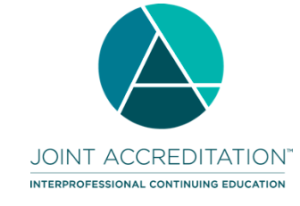Program Overview
This CE activity will highlight recent advances in the usage of therapeutic agents for the reversal of oral anticoagulants, particularly in patients with life-threatening bleeds. The expert faculty, Dr. Charles V. Pollack Jr., will review emerging therapies for patients with uncontrolled bleeding as well as discuss the latest data on current therapeutic options for the reversal prior to urgent of emergent invasive procedures. Dr. Pollack will relay best practices treating and managing patients at high-risk of bleeding on chronic anticoagulation medication. Upon completion of this activity, learners will gain insight into current standards for improving outcomes and quality of life in this high-risk patient population.
Target Audience
Cardiologists, emergency medicine physicians, intensivists, neurologists, neurosurgeons, hospital-based pharmacists, and other healthcare professionals involved in the management of oral anticoagulant reversal in patients
Agenda
I. Current & Emerging Therapies to Reverse Anticoagulants in Patients with Life-Threatening Bleeding
II. A Clinical Analysis of the Latest Data on Therapeutics for the Reversal of Anticoagulants
III. Developing Management Strategies with the Healthcare Team to Manage High Risk Patients on Chronic Anticoagulation Medication
Learning Objectives
- Discuss current and emerging therapies to reverse anticoagulants in patients with uncontrolled or life- threatening bleeding.
- Analyze new data on therapeutics for the reversal of oral anticoagulants
- Work with the healthcare team to develop appropriate management strategies for patients at high risk of bleeding who are chronic anticoagulation medication.
Faculty
 Charles V. Pollack, Jr., MA, MD, FACEP, FAHA, FACC, FESC
Charles V. Pollack, Jr., MA, MD, FACEP, FAHA, FACC, FESC
Department of Emergency Medicine
University of Mississippi School of Medicine
Jackson, Mississippi
Disclosures of Conflict of Interest
It is the policy of AcademicCME that all faculty, instructors, and planners disclose real or apparent conflicts of interest relating to the topics of this educational activity.
The faculty reported the following financial relationships or relationships to products or devices they or their spouse/life partner have with commercial interests related to the content of this CE activity:
| Faculty | Relationship Identified With: |
|
Charles V. Pollack Jr., MD
|
Grant/Research Support: AstraZeneca Pharmaceuticals, Boehringer-Ingelheim Pharmaceuticals; CSL Behring |
Planners and Peer Reviewers
Timothy Hayes, MD, PhD; Kim Cheramie, MSN, RN-BC; Nicole Brestowski and Devon Dietzel hereby state that they or their spouse/life partner do not have any financial relationships to products or devices with any commercial interests related to the content of this activity of any amount during the past 12 months.
Accreditation Statement
In support of improving patient care, AcademicCME is jointly accredited by the Accreditation Council for Continuing Medical Education (ACCME), the Accreditation Council for Pharmacy Education (ACPE), and the American Nurses Credentialing Center (ANCC), to provide continuing education for the healthcare team.

Credit Designation Statements
AcademicCME designates this live material for a maximum of 0.75 AMA PRA Category 1 CreditsTM. Clinicans should claim only the credit commensurate with the extent of their participation in the activity.
Financial Support
This activity has been supported by an independent educational grant from CSL Behring.
Disclosure of Unlabeled Use
This educational activity may contain discussion of published and/or investigational uses of agents that are not indicated by the FDA. AcademicCME and from CSL Behring do not recommend the use of any agent outside of the labeled indications.
Disclaimer
Participants have an implied responsibility to use the newly acquired information to enhance patient outcomes and their own professional development. The information presented in this activity is not meant to serve as a guideline for patient management. Any procedures, medications, or other courses of diagnosis or treatment discussed or suggested in this activity should not be used by clinicians without evaluation of their patient’s conditions and possible contraindications on dangers in use, review of any applicable manufacturer’s product information, and comparison with recommendations of other authorities.
Method of Participation
In order to claim credit, participants must complete the following:
- Read the learning objectives, accreditation information and faculty disclosures at the beginning of this activity.
- Complete the Pre-Activity Questions.
- Read or Review the activity content.
- Complete the Post-Activity Test Questions and Evaluation.
- Healthcare providers who receive a grade of 70% or better on the Post-Activity Test Questions and who complete the Evaluation will receive a CME/CNE Certificate.
- All other participants who receive a grade of 70% or better on the Post-Activity Test Questions and who complete the Evaluation will receive a Certificate of Participation.
CE Inquiries/Special Needs
For all CE inquiries or special needs, please contact [email protected].




